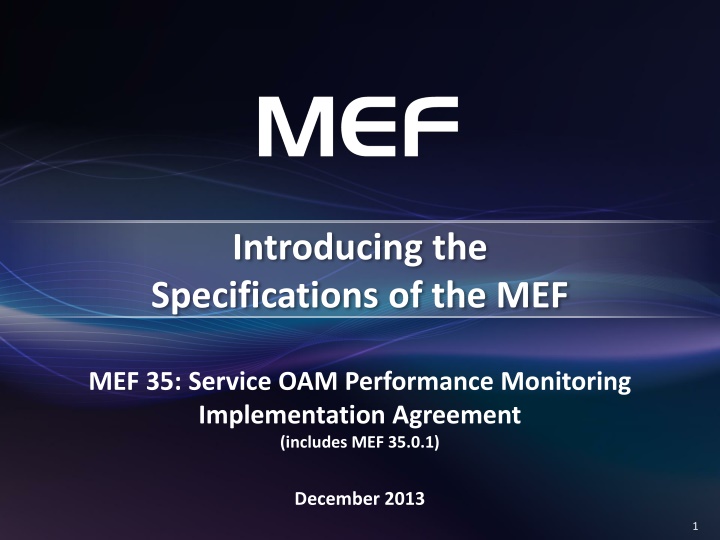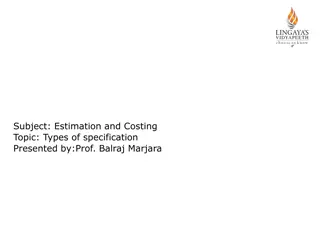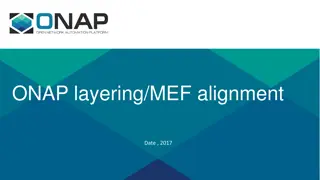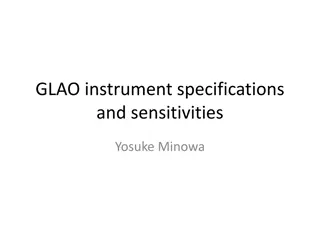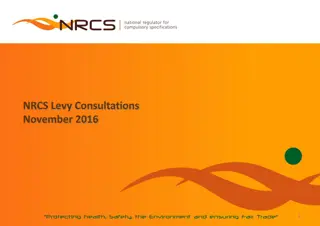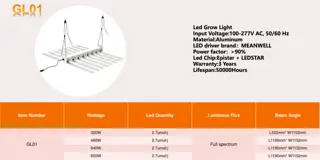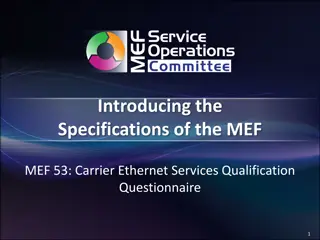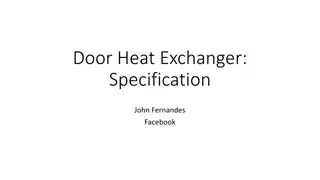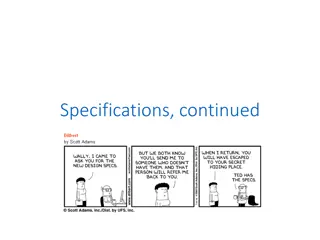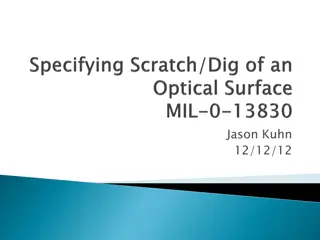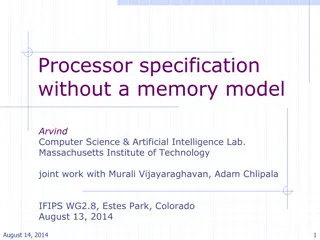MEF Specifications Overview
This presentation introduces MEF specifications including Service OAM Performance Monitoring, outline of approved MEF specifications, and a list of approved MEF specifications covering various aspects of Ethernet services and network architecture.
Download Presentation

Please find below an Image/Link to download the presentation.
The content on the website is provided AS IS for your information and personal use only. It may not be sold, licensed, or shared on other websites without obtaining consent from the author.If you encounter any issues during the download, it is possible that the publisher has removed the file from their server.
You are allowed to download the files provided on this website for personal or commercial use, subject to the condition that they are used lawfully. All files are the property of their respective owners.
The content on the website is provided AS IS for your information and personal use only. It may not be sold, licensed, or shared on other websites without obtaining consent from the author.
E N D
Presentation Transcript
Introducing the Specifications of the MEF MEF 35: Service OAM Performance Monitoring Implementation Agreement (includes MEF 35.0.1) December 2013 1
Outline Approved MEF Specifications This Presentation About this Specification Overview Maintenance Entities PM Solutions PM Considerations Summary Includes from 35.0.1 information Amendment on 1SL 2 2
Approved MEF Specifications* Specification Description MEF 2 Requirements and Framework for Ethernet Service Protection MEF 3 Circuit Emulation Service Definitions, Framework and Requirements in Metro Ethernet Networks MEF 4 Metro Ethernet Network Architecture Framework Part 1: Generic Framework MEF 6.1 Metro Ethernet Services Definitions Phase 2 MEF 7.1 EMS-NMS Information Model Phase 2 MEF 8 Implementation Agreement for the Emulation of PDH Circuits over Metro Ethernet Networks MEF 9 Abstract Test Suite for Ethernet Services at the UNI MEF 10.2 Ethernet Services Attributes Phase 2 MEF 11 User Network Interface (UNI) Requirements and Framework MEF 12.1 Metro Ethernet Network Architecture Framework Part 2: Ethernet Services Layer MEF 13 User Network Interface (UNI) Type 1 Implementation Agreement MEF 14 Abstract Test Suite for Traffic Management Phase 1 MEF 15 Requirements for Management of Metro Ethernet Phase 1 Network Elements MEF 16 Ethernet Local Management Interface *Current at time of publication. See MEF web site for official current list, minor updates and superseded work (such as MEF 1 and MEF 5) 3
Approved MEF Specifications Specification Description MEF 17 Service OAM Framework and Requirements MEF 18 Abstract Test Suite for Circuit Emulation Services MEF 19 Abstract Test Suite for UNI Type 1 MEF 20 User Network Interface (UNI) Type 2 Implementation Agreement MEF 21 Abstract Test Suite for UNI Type 2 Part 1: Link OAM MEF 22.1 Mobile Backhaul Implementation Agreement Phase 2 MEF 23.1 Class of Service Implementation Agreement Phase 2 MEF 24 Abstract Test Suite for UNI Type 2 Part 2: E-LMI MEF 25 Abstract Test Suite for UNI Type 2 Part 3: Service OAM MEF 26.1 External Network Network Interface (ENNI) Phase 2 MEF 27 Abstract Test Suite For UNI Type 2 Part 5: Enhanced UNI Attributes & Part 6: L2CP Handling MEF 28 External Network Network Interface (ENNI) Support for UNI Tunnel Access and Virtual UNI MEF 29 Ethernet Services Constructs 4
Approved MEF Specifications Specification Description MEF 30 Service OAM Fault Management Implementation Agreement MEF 31 Service OAM Fault Management Definition of Managed Objects MEF 32 Requirements for Service Protection Across External Interfaces MEF 33 Ethernet Access Services Definition MEF 34 Abstract Test Suite for Ethernet Access Services MEF 35 Service OAM Performance Monitoring Implementation Agreement MEF 35.0.1 MEF 35 Amendment 1 1SL MEF 36 Service OAM SNMP MIB for Performance Monitoring Abstract Test Suite for ENNI MEF 37 5
MEF 35 Specification Overview MEF 35 Service OAM Performance Monitoring Implementation Agreement An Implementation Agreement (IA) which provides for Service Operations, Administration, and Maintenance (SOAM) that satisfies and extends the Performance Monitoring (PM) framework and requirements described in MEF 17. Purpose All, since it provides the fundamentals required to deliver Carrier Ethernet services. Audience Standardized Services 6 6
MEF 35.0.1 Specification Overview Service OAM Performance Monitoring Implementation Agreement Amendment 1 MEF 35.0.1 Amendment to MEF 35 to add a fourth (optional) PM solution providing support for Dual-Ended Synthetic Loss Measurement. Purpose All, since it provides the fundamentals required to deliver Carrier Ethernet services. Audience Standardized Services 7 7
About MEF 35 Purpose: This presentation is an introduction to MEF 35 Service OAM Performance Monitoring Implementation Agreement Audience Vendors building devices supporting OAM functions for Carrier Ethernet Services Service Providers delivering Carrier Ethernet Services Other Documents MEF 17 Service OAM Framework and Requirements MEF 30 Service OAM Fault Management Implementation Agreement 9
Service OAM MEF 17 provides the framework Relevant for Subscribers (customers), Operators and Service Providers Fault Management IA (MEF 30) FM of MEF Services Specifies profile of protocols defined in IEEE 802.1ag and ITU-T Y.1731 Provides basic SOAM architecture and requirements for each of the recommended MEGs Performance Management IA (MEF 35) PM of MEF Services Specifies profile of protocols defined in ITU-T Y.1731 Amendment for 1SL (MEF 35.0.1) Amendment to MEF 35 to add a fourth (optional) PM solution providing support for Dual-Ended Synthetic Loss Measurement. Related Work MIBs (SNMP) for FM and PM covered in MEF 31 and MEF 36 10
MEF Service Lifecycle and SOAM Network Management Performance management is a critical part of a circuit s lifecycle 11
Introducing MEF 35 The presentation is organized into the following sections: Overview Maintenance Entities PM Solutions PM Considerations 13
Performance Monitoring Based on ITU-T Y.1731 Protocols or Performance Monitoring mechanisms Frame Delay Frame Delay Range Inter-Frame Delay Variation Frame Loss Ratio Availability 14
Hierarchical OAM Domains Customer Service Provider Customer UNI ENNI UNI Operator 1 Network Operator 2 Network CPE CPE NID NID Customer Domain Ethernet Virtual Connection Customer Domain Provider Domain Operator 1 Domain Operator 2 Domain Hierarchical maintenance domains bind OAM flows & OAM responsibilities 15
Terminology and Concepts MEF 35 builds upon MEF 17 and MEF 30 defined SOAM components including: Maintenance Entity (ME) Maintenance Entity Group (MEG) MEG End Point (MEP) MEG Intermediate Point (MIP) MEG Level MEG Class of Service (CoS) MEF 30 and MEF 35 are based on terminology found in ITU Y.1731 16
Default MEG Level Usage Default MEG Level 6 5 4 3 2 1 . . . . . . . . .. . . . . . . . . . . . . . . . . . . . . . . . . . . . . . . This is the complete set of default MEG levels Not all MEG levels are required in every application 17
Key Maintenance Entity Groups (MEGs) MEG Suggested Use Default Direction for MEPs Default MEG Level Subscriber MEG Subscriber monitoring of an Ethernet service Up or Down 6 Test MEG Service Provider isolation of subscriber reported problems Down 5 EVC MEG Service Provider monitoring of provided service Up 4 Service Provider MEG Service Provider Monitoring of Service Provider network Up 3 Operator MEG Network Operator monitoring of their portion of a network Up 2 UNI MEG Service Provider monitoring of a UNI Down 1 ENNI MEG Network Operators' monitoring of an ENNI Down 1 18
MEP Terminology MAC Relay Up MEP Frame Filtering Down MEP Port Filtering Port Filtering Port 1 Port 2 Up MEPs are positioned toward the MAC Relay Processes the OAM traffic that comes through the MAC Relay Down MEPs are positioned toward the LAN Processes traffic that enters the Switch from the LAN 19
MEG End Point (MEP) MEG MEG End Point MEP SOAM points associated with a single MEG level (and a single Maintenance Domain) Can generate and respond to SOAM protocols Up MEPs are oriented toward the MAC Relay (non-filled triangle) Down MEPs are oriented toward the network (filled triangle) 20
MEG End Point (MEP) Orientation Down MEP - is a MEP residing in a Bridge that receives SOAM PDUs from, and transmits them towards, the direction of the LAN. Note that in the MEF service model, the LAN is a transmission facility in the egress direction, rather than towards the Bridge Relay Entity. Up MEP - is a MEP residing in a Bridge that transmits SOAM PDUs towards, and receives them from, the direction of the Bridge Relay Entity . Note that in the MEF service model, the Bridge Relay Entity itself is out of scope. A given MEG can be terminated by either Up or Down MEPs. Up MEPs are the most commonly used MEP and are recommended for the following MEG levels: EVC, Service Provider, Operator and optionally the Subscriber. 21
MEG Intermediate Point (MIP) MIP MEG Intermediate Point MIP SOAM points associated with a single MEG level (and a single Maintenance Domain) Can respond to SOAM protocols, but cannot generate requests Defined to be located at External Interfaces such as ENNIs (or UNIs). In practice can also be used in additional internal operator locations where monitoring is desired 22
PM Sessions 23
PM Solution Components SOAM PM IA Focused on the Network Element Layer A PM Solution is made up of one or more PM Functions 24
PM Solutions There are four PM Solutions defined, each with different characteristics A PM Solution uses PM Functions which use the PM tools defined in ITU-T Y.1731 PM Solution Type(s) for Loss PM-1 point-to-point multipoint MEG Measurement Technique PM Function(s) Mandatory or Optional Mandatory Synthetic Testing Single-Ended Delay Single-Ended Synthetic Loss PM-2 point-to-point multipoint n/a Dual-Ended Delay Optional PM-3 point-to-point Counting Service Frames Single-Ended Service Loss Optional PM-4 (35.0.1) point-to-point multipoint Synthetic Testing Dual-Ended Synthetic Loss Optional PM Function Single-Ended Delay Dual-Ended Delay Single-Ended Service Loss Single-Ended Synthetic Loss ITU-T PM Tool ITU-T Two-way ETH-DM ITU-T One-way ETH-DM ITU-T Single-Ended ETH-LM ITU-T Single-Ended ETH-SLM ITU-T PDU(s) DMM/DMR 1DM LMM/LMR SLM/SLR Dual-Ended Synthetic Loss ITU-T Dual-Ended ETH-SLM 1SL 25
Dual-Ended Functions 27 27
PM Solutions PM-1 Single-Ended Point-to-Point or Multipoint Delay and Synthetic Loss Single-Ended functions send messages from a Controller MEP to a Responder MEP which responds back to the Controller MEP Metrics Collected One-way Frame Delay One-way Mean Frame Delay One-way Frame Delay Range Inter-Frame Delay Variation One-way Frame Loss Ratio Availability for an EVC or OVC Resiliency-related metrics for EVC or OVC 28
PM Solutions (continued) PM-2 Dual-Ended Point-to-Point or Multipoint Delay Dual-Ended functions send measurements from a Controller MEP to a Sink MEP where the calculations are made Metrics Collected One-way Frame Delay One-way Mean Frame Delay One-way Frame Delay Range Inter-Frame Delay Variation PM-3 Single-Ended Service Loss Measurement This solution uses the service traffic instead of synthetic traffic Metrics Collected One-way Frame Loss Ratio 29
PM Solutions (continued) PM-4 (35.0.1) Dual-Ended Point-to-Point or Multipoint Delay Dual-Ended functions send measurements from a Controller MEP to a Sink MEP where the calculations are made Metrics Collected One-way Frame Loss 30
PM-1 Example 31
Single-Ended Synthetic Loss Measurement ENNI NID-A NID-B Operator 2 (OOF operator) Operator 1 (Service Provider) UNI UNI SLM SLM MEP-B MEP-A SLR SLR SLM Message created at the Controller MEP (at MEP-A) TestID is in the PDU to differentiate Source MEP ID Value of local counter (at MEP-A) containing the number of SLM messages sent SLR Message is created at the Responder MEP (at MEP-B) Received counts are copied Local counter of received SLM messages are sent back to the Controller MEP Frame Loss is calculated at the Controller MEP 32
Summary 34
Related Specifications MEF 35 section 6 lists a full list of related MEF specifications MEF 35.0.1 MEF 30 SOAM FM MEF 31 SOAM FM MIB MEF 36 SOAM PM MIB ITU-T Y.1731 MEF 17 SOAM requirements and frameworks phase 1 MEF 12.1 Carrier Ethernet Network Architecture Part 2 ETH Service Layer 35
Final Word Service OAM In the context of MEF 35, mechanisms are defined that support service-level OAM in MENs. Next Actions Read the MEF 35 specification Read the MEF 30 specification Read IEEE 802.1Q-2011 clauses 18, 19, 29, 21, and 22 Read ITU-T Y.1731 Review of MEF 17, MEF 10 and MEF 15 may also be helpful Understand the principal service OAM components and capabilities Review also MEF 36, MEF 31 and MEF 12.1 specification 36
For Full Details Please visit www.metroethernetforum.org Select Information Center on Left Navigation to access the full specification and extracted MIB files E-Line Service type Carrier Ethernet 2.0 EVPL Services UNI UNI CE Carrier Ethernet Network E-LAN Service type CE Carrier Ethernet 2.0 EVP-LAN Service Internet CE UNI UNI ISP POP CE EVC: UNI: Ethernet Virtual Connection User Network Interface. the physical demarcation point between the responsibility of the Service Provider and the responsibility of the End- User/Subscriber Customer Equipment UNI CE Carrier Ethernet Network CE UNI CE 37 37
Accelerating Worldwide Adoption of Carrier-class Ethernet Networks and Services www.MetroEthernetForum.org 38
